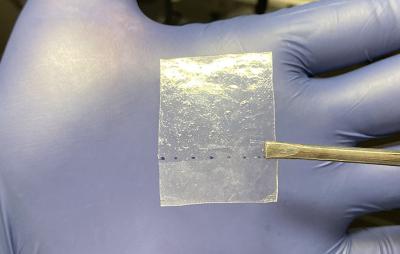New isomer passivation method could yield efficient and stable perovskite solar cells
An international team of researchers recently tested a new way of passivating defects in perovskite solar cells. Using a tailored arrangement of atoms, the team managed to overcome challenges related to the formation of a two-dimensional perovskite layer on top of the active cell material, and reach 21.4% conversion efficiency for a 26cm2 active area, which is said to be a record for a perovskite device of this size.
Passivation layers, deposited on top of the perovskite material, play an essential role in reducing material defects and unwanted reactions within the material, to improve both performance and stability. One strategy that has been found effective is the use of alkylammonium halides. In many cases these form an additional two-dimensional perovskite layer on top of the perovskite, which can improve device stability but also negatively affect performance.







